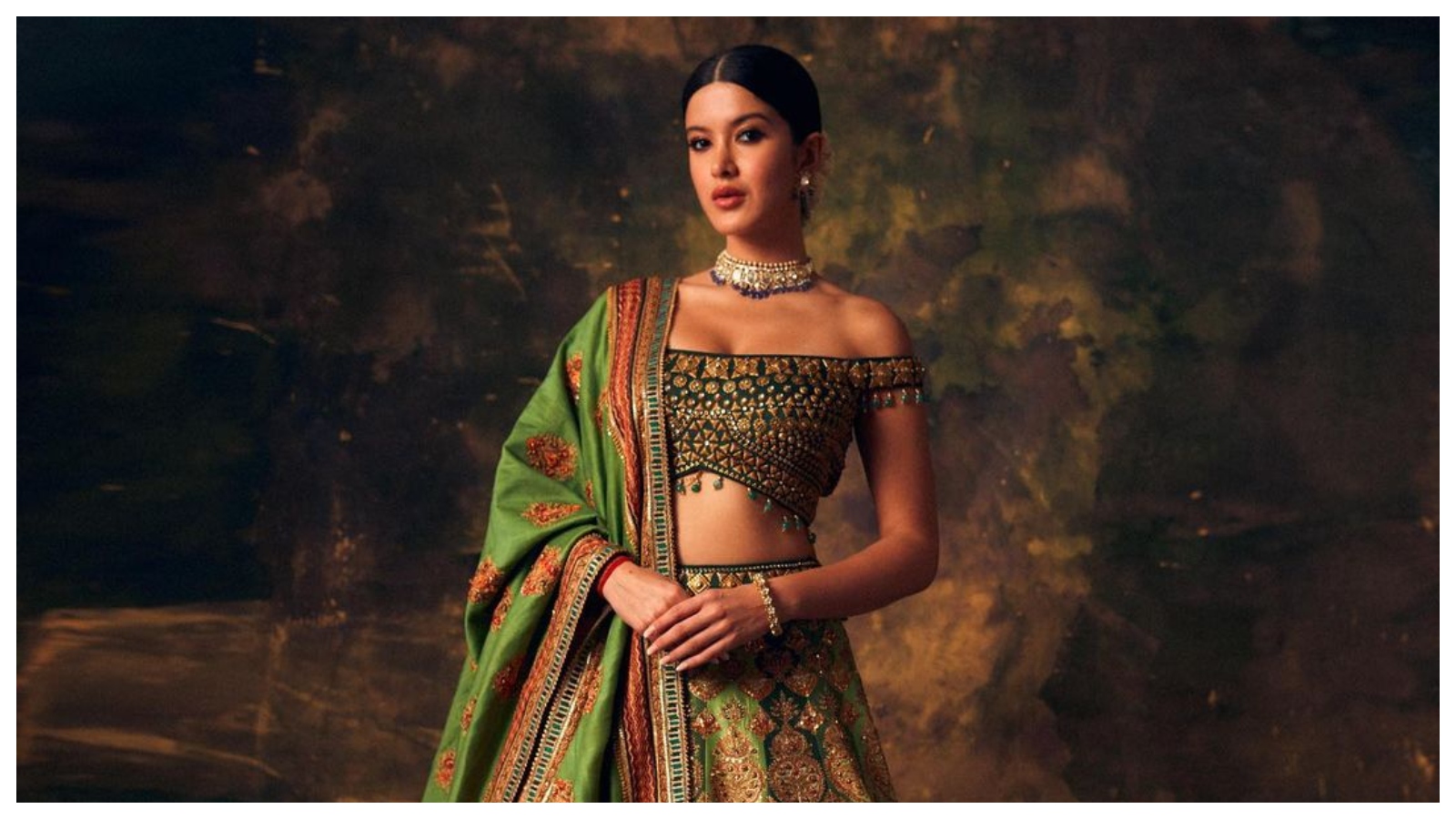In India, bangles go beyond being mere fashion accessories. They hold a special place, intertwined with a women’s identity and cultural significance.
India’s diversity shines through the various styles of bangles worn across its 29 states, serving as both decoration and symbols of identity.
While modern life may have shifted priorities, the tradition remains dear to married women while playing a key element in a woman’s “solah shringar”, representing her married status.
Crafted from materials like glass or gold, they encapsulate beauty, tradition, and prosperity – a testament to India’s rich heritage.
Therefore, we are here to delve into the journey of history and cultural significance behind these cherished ornaments with a Priyaasi exclusive collection of bangles.
Historical Roots
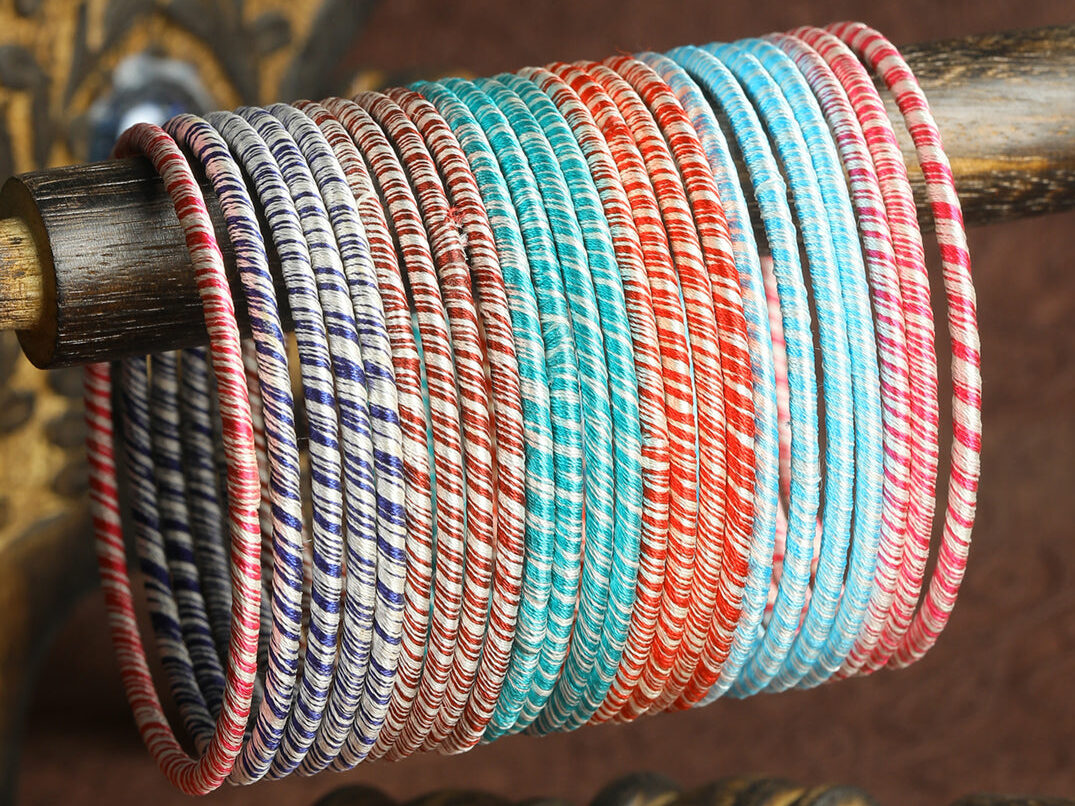
The word “Bangle” originates from the Hindi word ‘bungri’, meaning glass. These traditional ornaments are predominantly worn by women throughout South Asia, including India, Nepal, Pakistan and Bangladesh. Bangles hold significant cultural value and for most Indian weddings, it is considered inauspicious for a married woman to be without them.
Bangles come in various materials, including metal (copper, silver, gold, iron), wood, plastic, and glass. Archaeological findings showcase the long history of bangles in India, with highly ornate examples dating back to the Mauryan Empire. Gold bangles have been excavated from the historic site of Taxila, highlighting the antiquity of this tradition.
The roots of bangles in India trace back to at least 2500 B.C., as evidenced by archaeological discoveries from the Indus Valley Civilization. These findings underscore the enduring significance and historical legacy of bangles in Indian culture.
Cultural Significance

In Indian culture, bangles transcend ornaments; they symbolize the essence of a complete woman. While young girls can wear them, married women are typically expected to adorn themselves with bangles. They are a vital component of the “solah shringar”, which refers to the sixteen adornments worn by Indian brides on their wedding day.
This tradition of wearing Indian gold bangles post-marriage holds deep significance, representing
- health,
- luck, and
- prosperity.
Indian gold bangles are intrinsically linked to matrimony, much like Western wedding rings symbolize marriage. Being bare-handed, especially for a married woman, is considered inauspicious during most Indian weddings.
Traditionally, the breaking of bridal glass or lac bangles is considered unfortunate. In Sikh tradition, it’s noteworthy that women are not expected to purchase the bangles they wear, adding another layer to the cultural significance of this cherished accessory.
Contemporary and Traditional Blend

The world of bangles in India beautifully blends the contemporary with the traditional. As fashion trends have evolved, bangles have evolved, bangles have followed suit, adapting to the preference of modern wearers. Contemporary bangles featuring geometric designs and innovative materials give a classic appeal to complement various everyday styles.
However, the deep-rooted respect for tradition remains intact. During important ceremonies and cultural events, such as weddings and religious rituals, circular glass or metal bangles continue to hold a special place. These traditional bangles symbolize timeless customs and values, underscoring the timeless significance of bangles in Indian culture.
Regional Significance of Bangles
India boosts a dazzling array of bangles, each with its unique significance. These diverse types of bangles are worn across the country, reflecting regional traditions and aesthetics.
1. Southern State
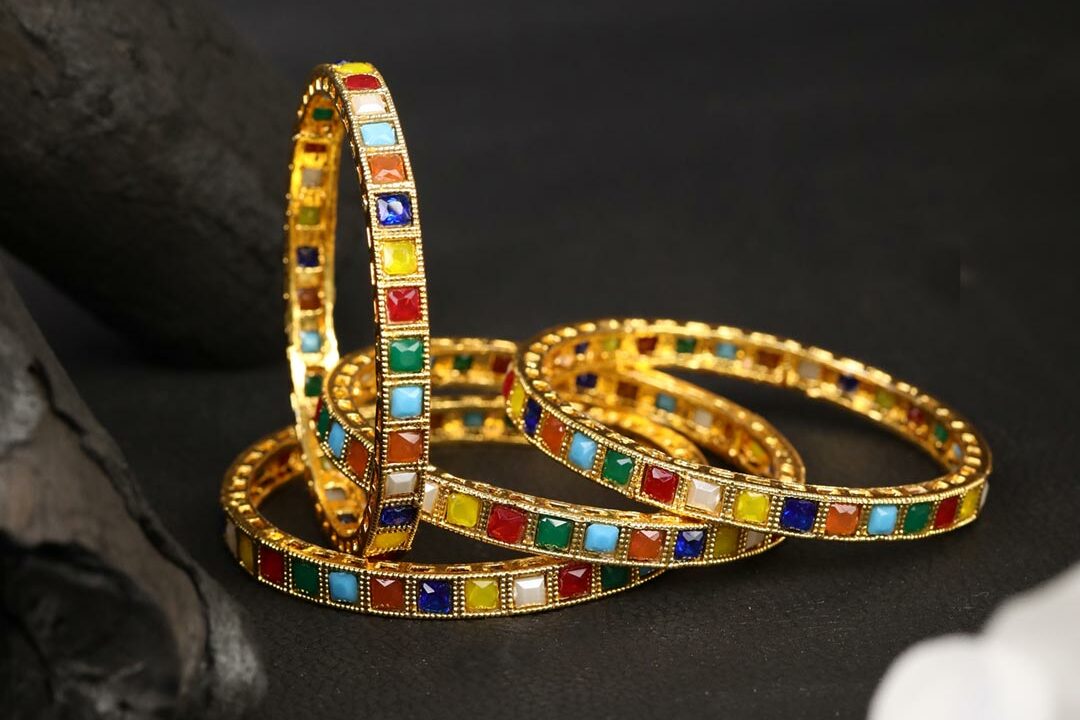
Gold bangles hold immense favour in the southern states of India. Some communities combine green glass bangles with gold ones, symbolizing fertility and prosperity.
2. Bengal
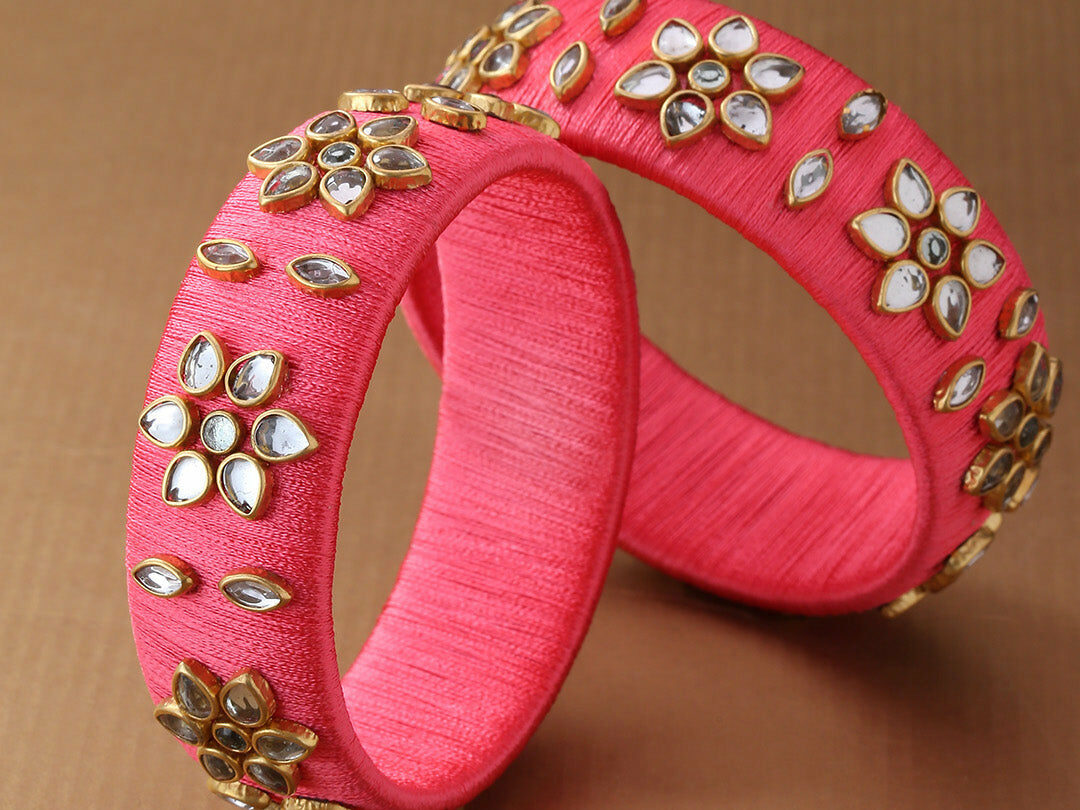
Brides in Bengal wear a conch shell bangle (shakha) and a red coral bangle (pole). Additionally, the mother-in-law gifts the bride a gold-plated iron bangle upon entering her new household, signifying acceptance.
3. Rajasthan and Gujarat

Brides in these states often wear ivory bangles or “chooda”. In Gujarat, a ceremony called “camera” involves the maternal uncle gifting the bride her chooda, along with a bridal silk saree with a red border.
4. Punjab
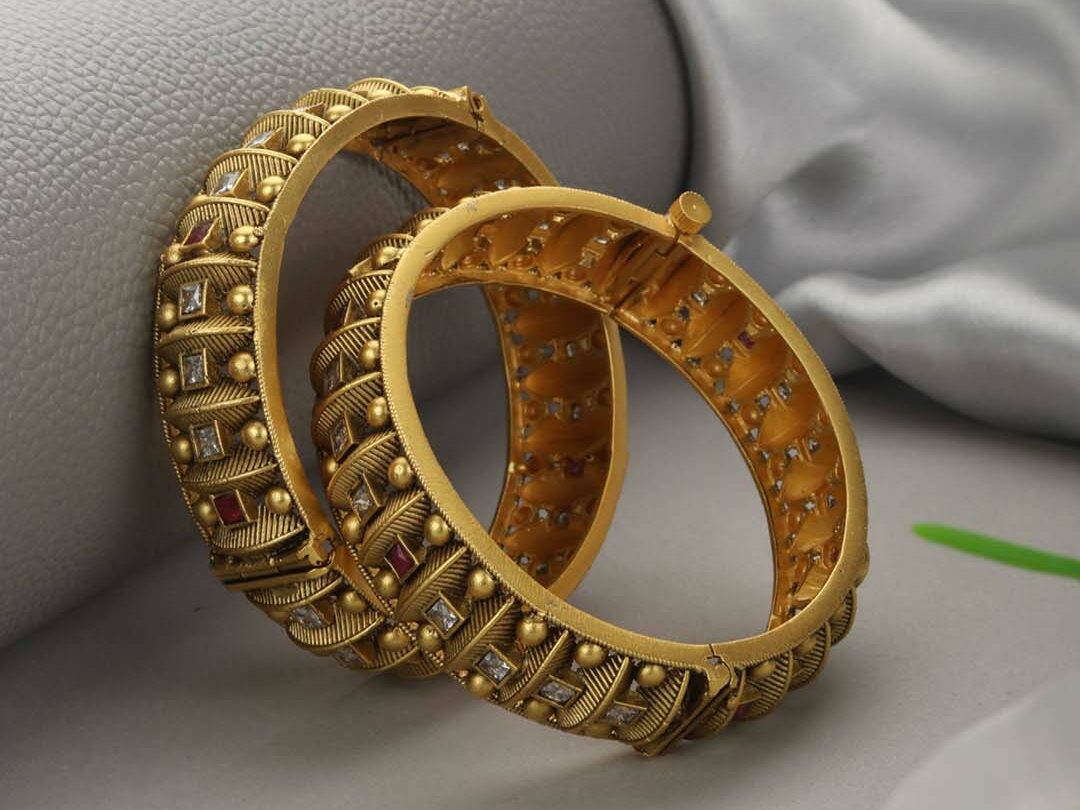
Brides-to-be wear ivory and red bangles known as “chooda”. These are typically gifted by the maternal uncle and worn for a specific period, often 40 days or more, based on family customs.
5. Maharashtra
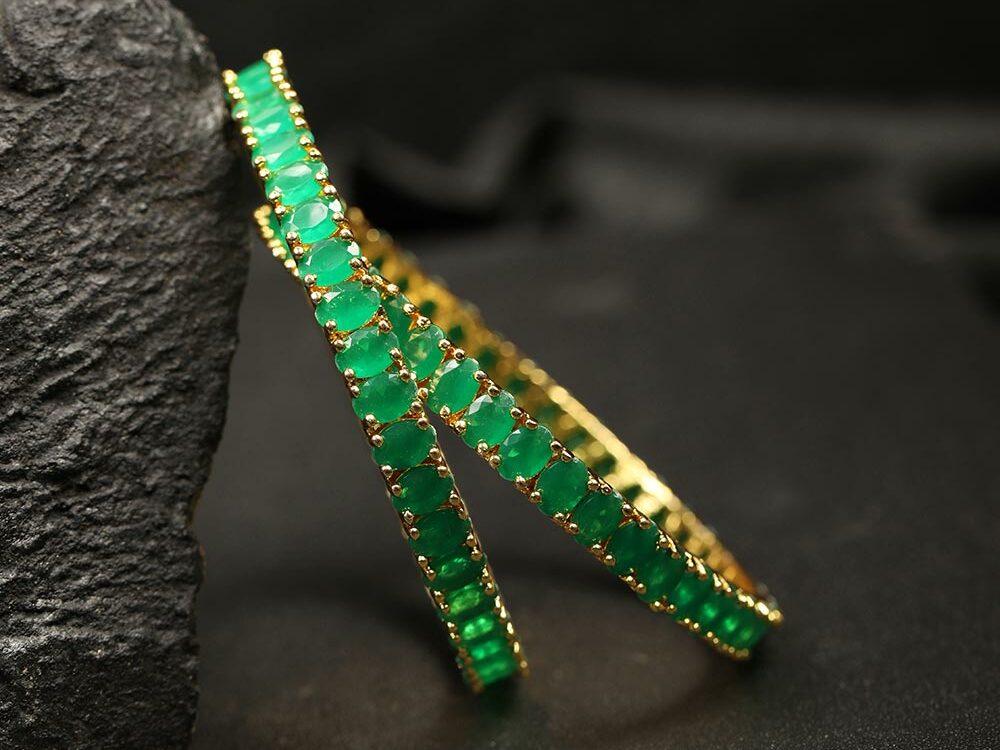
The bridal bangle ensemble in Maharashtra includes green glass bangles in odd numbers, symbolizing creativity, new life, and fertility. These are worn alongside solid gold bangle called “patlya” and carved kadas called “tode”, usually gifted by the groom’s family.
Conclusion
Bangles in Indian weddings are not mere accessories but carry profound cultural significance. The traditions highlight the enduring importance of bangles in Indian culture, transcending geographical boundaries and remaining an integral part of wedding ceremonies across the country.
FAQs
Do bangles have any special significance in Indian culture?
Yes, they do! Bangles are believed to bring good luck and protect against negative energies. They are also a symbol of marriage and are worn by brides as a sign of their new life.
Can men wear bangles in India?
While bangles are typically associated with women, in some Indian communities, it’s not uncommon for men to wear them as a fashion statement or for cultural reasons.
What is the cultural significance of bangles in India?
Bangles are considered the symbol of the complete woman. While girls in traditional Indian society are allowed to wear bangles, married women are generally expected to wear bangles.

